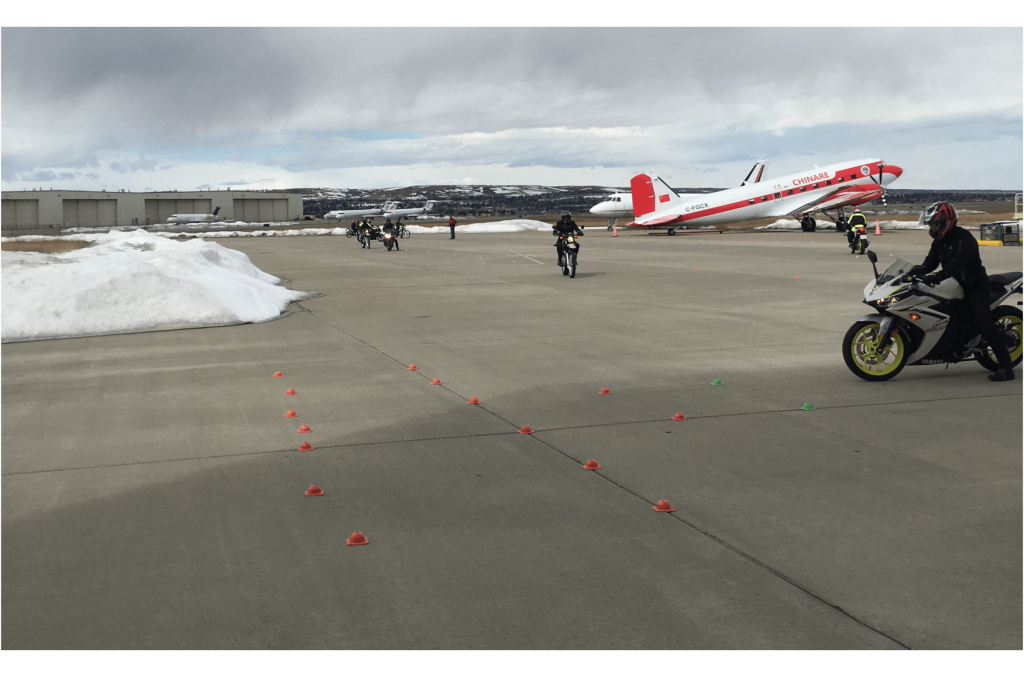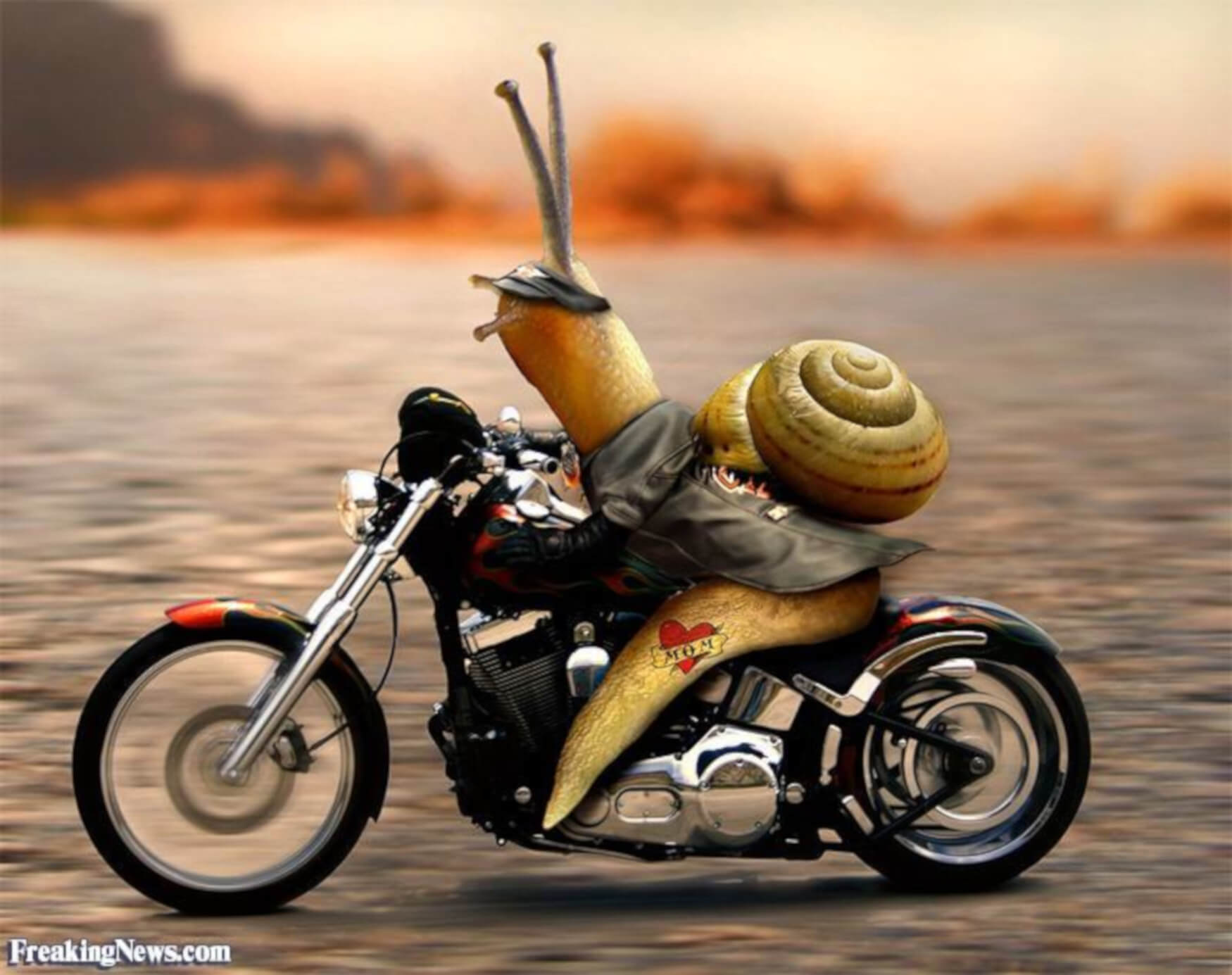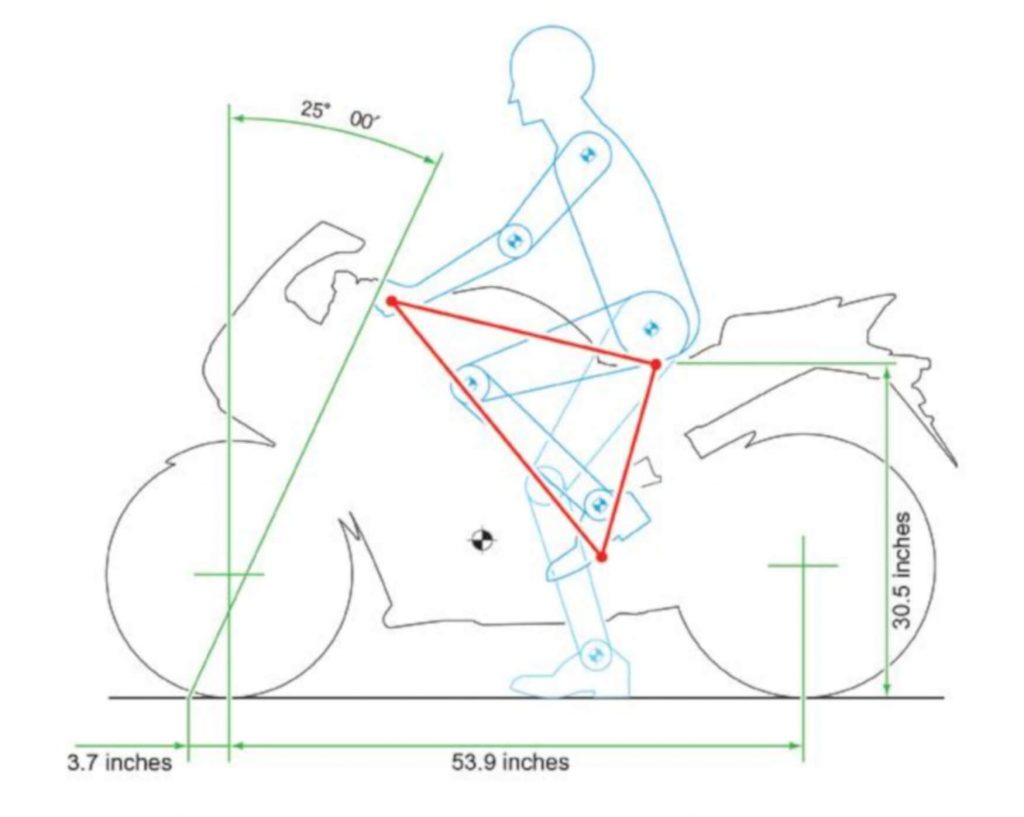Why Ride Slow?
Before we get into anything more complicated, we’re going to take a quick dive into slow motion riding. Riding a motorcycle at slow speeds can be way more technical and difficult than opening the throttle and going fast.
Most of the time on a motorcycle, we’re moving or going at least the minimum speed limit in any area. There are situations where we would need to slow down and use technical maneuvers. A couple of examples of places where you would need to do so is rush hour traffic and parking lots. Of course, there are a lot more scenarios, but these are more common.
Techniques Necessary
Photo Courtesy of Doc Wong
For riding slow, there are a few important things to be aware of as far as riding position and what you are doing with your body. When you move your body and where you are positioning it gives the motorcycle non-verbal cues, so you want to be sure to communicate with it in the proper way to make riding easiest. Five quick tips for optimizing your slow speed riding:
Riding Position
Be aware of how far back or forward you are with the tank and handlebars. Different motorcycle styles will differ how you sit on them (the ergonomics in technical terms), but here’s a good rule of thumb:
- Make sure you are able to get a decent grip on the tank with your thighs, as anything that moves below your waist will counter what you tell the bike with your upper body – essentially making the bike more wobbly than it should be.
Also, make sure you aren’t too far back in your seat. For some reason, I see a lot of new riders doing this, but all it does it decrease your turning ability and make it more difficult to control the bike. The more comfortably compact you are, the easier it is to control it.
Relax Your Grip
Yes, nervousness can cause people to tense up, but it’s good to be mentally aware of this, take a deep breath and relax. This will allow you to have better micro control, and as I’ve said in other articles nothing about a motorcycle is sudden, jerky, or excessive as far as applying controls and movements – it is very precise and very controlled.
Lean with the Bike
For someone having never ridden a bike, there can be thoughts like if I get closer to the ground, it’ll mean I’ll fall over – but that’s just not true as long as you don’t cut momentum and follow these five tips properly. And of course, practice, practice, practice.
Steer it Like a Vehicle at Slower Speeds
Once you’re going faster than 10 MPH (16 KPH for my metric people), this no longer applies – another steering form automatically takes place (saving that for another article). But slower than those speeds, you will need to steer the bike the direction you want to go.
TURN YOUR HEAD
Steps 1 through 4 are necessary but I saved the most important for last.
If you don’t physically turn your head in the direction you want to go, the bike will follow where you are looking – which usually is at something or somewhere you don’t want to go, and this is called object fixation, one of the major causes of motorcycle crashes.
In order to tell the bike you want to go somewhere, you should be turning your head in that direction even before you end up going in that direction. There’s a neat chain of events that happens when you do this. Your head turns your neck, shoulders, torso, and arms which automatically feeds information to the bike that you want to go in that direction.
For anyone that skis/snowboards, it’s the same concept of look where you want to go.
Can You Ride Slower Than Idle Speed?

Whenever I ask students, how would you ride slower than idle speed, I usually get one or two responses of the front or rear brake. The rear brake would be one part of a three-part equation. The front brake would not be used as you would need the use of the throttle.
Why use the throttle? Doesn’t that mean you’d go faster? Well, not necessarily. The use of the throttle to ride slower is in combination with using the friction zone (just like in my last article about friction zone [link here]) and using the rear brake to scrub off more speed as needed.
The throttle is very important as because you are removing momentum by utilizing the friction zone and rear brake, you now need to add momentum in order to keep the bike upright. This ties in with my article about forward momentum and how that’s needed for the bike to want to stay up.
There is also a neat thing that happens with the engine as you add throttle. The pistons in the engine move faster, creating more of an up/down force that helps in keeping the bike upright. It is very important as, without that element, the other two just create a situation where the bike will want to fall over or get set to stop.
Straight Lines
One of my favorite games to play when driving in heavy traffic is to see just how slow and straight I can go (make sure this is traffic appropriate as obstruction of traffic is illegal). This would be when coming up to a red light or in a traffic jam and it’s crawling along. I would then see how long I can go without needing to stop and put my foot down.
Techniques to Keep Straight
One technique is to look as far ahead as you can – it makes balance way easier.
Next is to hug the tank with your knees. The whole stabilization of anything below your waist is done by hugging the tank. Not a death grip as your thighs will get tired pretty quick, but a decent grip will stabilize you and you’ll see the difference between that and just letting your knees flop all over.
The third part is using your friction zone to control the speed, the throttle to keep the bike upright and applying the rear brake as needed to scrub off that extra speed.
90 Degree Turns/Turning
For turning, using all of the techniques for straight line, plus turning your head and leaning with the bike is important. There are a few things to avoid.
One thing to avoid that happens 99% of the time is when I see a students foot come off the peg because the bike leans too much – all because they were looking down and not at the same level of the horizon, not using enough throttle and not being in the friction zone. You really need these three things to master turning 180 degrees in tight circles or teardrop shapes.
For 90 degree turns (or “L” turns), you’ll now have to turn your head and almost have your chin to your shoulder and really look through that turn while slowing yourself down with the rear brake as needed. Going too fast won’t help and will force you to your corner too shallow.



